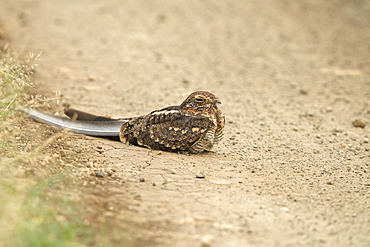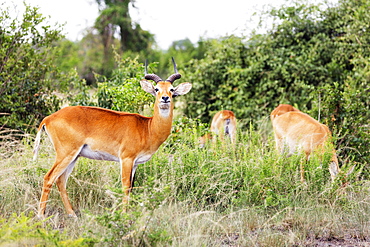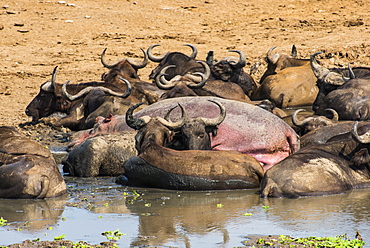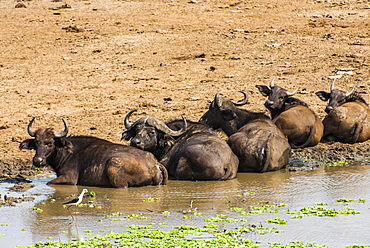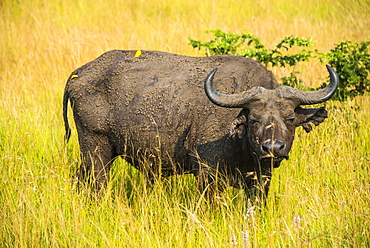Recent searches
Loading...
1358-153 - Bermuda Historical Society Museum, the Perot Post Office and the Queen Elizabeth Park, Hamilton, Bermuda, Atlantic, North America
832-394683 - Boat on Maligne Lake, behind it mountain range Queen Elizabeth Ranges with Samson Peak, cloudy sky, Jasper National Park, Rocky Mountains, Alberta, Canada, North America
860-290201 - Hippopotamus (Hippopotamus amphibius) in water,Queen Elizabeth National Park, Uganda
860-290390 - Standard-winged Nightjar (Macrodipteryx longipennis) on ground, Queen Elizabeth NP, Uganda
860-290388 - Uganda Kob (Kobus thomasi), Queen Elizabeth National Park, Uganda
1116-50238 - Hippopotamus pod (Hippopotamus amphibius), Queen Elizabeth National Park; Western Region, Uganda
1116-50239 - Hippopotamus and calf (Hippopotamus amphibius) by Kazinga Channel, Queen Elizabeth National Park; Western Region, Uganda
1116-50240 - African Elephant (Loxodonta) herd at sunset, Queen Elizabeth National Park; Western Region, Uganda
1116-50241 - African Elephant (Loxodonta), Queen Elizabeth National Park; Western Region, Uganda
832-388841 - Lion (Panthera leo) lies in a tree, Queen Elizabeth National Park, Uganda, Africa
832-388782 - Vervet Monkey (Chlorocebus pygerythrus), eating, sitting in the bush, Queen Elizabeth National Park, Uganda, East Africa, Africa
832-384156 - Maligne Lake, behind mountain range Queen Elizabeth Ranges, cloudy sky, Jasper National Park, Rocky Mountains, Alberta, Canada, North America
1176-1197 - Big Ben (Queen Elizabeth Tower), the Houses of Parliament), UNESCO World Heritage Site, and Westminster Bridge, Westminster, London, England, United Kingdom, Europe
1176-1199 - Big Ben (Queen Elizabeth Tower), the Palace of Westminster (Houses of Parliament), UNESCO World Heritage Site, and Westminster Bridge, London, England, United Kingdom, Europe
1245-1939 - Queen Elizabeth II Botanic Park, North Side, Grand Cayman, Cayman Islands, Caribbean, Central America
1218-1051 - Antelope in Queen Elizabeth National Park, Uganda, East Africa, Africa
1218-1067 - Elephants in Queen Elizabeth National Park, Uganda, East Africa, Africa
1218-1055 - Hanging Lions in the Ishasha sector, Queen Elizabeth National Park, Uganda, East Africa, Africa
1218-1066 - Elephants in Queen Elizabeth National Park, Uganda, East Africa, Africa
1218-1071 - Wild birds in Queen Elizabeth National Park, Uganda, East Africa, Africa
1218-1064 - Antelope in Queen Elizabeth National Park, Uganda, East Africa, Africa
1218-1068 - Elephants in Queen Elizabeth National Park, Uganda, East Africa, Africa
1218-1065 - African Cape buffalo in Queen Elizabeth National Park, East Africa, Africa
1218-1070 - Elephants in Queen Elizabeth National Park, Uganda, East Africa, Africa
1218-1069 - Elephants in Queen Elizabeth National Park, Uganda, East Africa, Africa
1218-1058 - Hanging Lions in the Ishasha sector, Queen Elizabeth National Park, Uganda, East Africa, Africa
1218-1063 - Antelope in Queen Elizabeth National Park, Uganda, East Africa, Africa
1218-1052 - Antelope in Queen Elizabeth National Park, Uganda, East Africa, Africa
1218-1054 - Hanging Lions in the Ishasha sector, Queen Elizabeth National Park, Uganda, East Africa, Africa
1218-1057 - Hanging Lions in the Ishasha sector, Queen Elizabeth National Park, Uganda, East Africa, Africa
1218-1059 - Hanging Lions in the Ishasha sector, Queen Elizabeth National Park, Uganda, East Africa, Africa
1218-1053 - Hanging Lions in the Ishasha sector, Queen Elizabeth National Park, Uganda, East Africa, Africa
1218-1061 - Hanging Lions in the Ishasha sector, Queen Elizabeth National Park, Uganda, East Africa, Africa
1218-1056 - Hanging Lions in the Ishasha sector, Queen Elizabeth National Park, Uganda, East Africa, Africa
1116-42585 - 6 Minute Exposure Of An Old Dock, Queen Elizabeth Provincial Park, Alberta, Canada
1247-197 - Views of Orbitz and London Aquatic Centre over Three Mills River, Queen Elizabeth Park, Stratford, London, England, United Kingdom, Europe
1247-196 - The London Stadium and Orbitz at Queen Elizabeth Park, Stratford, London, England, United Kingdom, Europe
1247-198 - Views of Orbitz and London Aquatic Centre over Three Mills River, Queen Elizabeth Park, Stratford, London, England, United Kingdom, Europe
1116-42062 - View Of Toronto Skyline From Above Queen Elizabeth Way Highway During Start Of Rush Hour Traffic, Toronto, Ontario, Canada.
1116-41545 - View Of Toronto Skyline From Above Queen Elizabeth Way Highway During Start Of Rush Hour Traffic, Toronto, Ontario, Canada.
1116-41548 - View Of Toronto Skyline From Above Queen Elizabeth Way Highway During Start Of Rush Hour Traffic, Toronto, Ontario, Canada.
1116-41546 - View Of Toronto Skyline From Above Queen Elizabeth Way Highway During Start Of Rush Hour Traffic, Toronto, Ontario, Canada.
1116-41547 - View Of Toronto Skyline From Above Queen Elizabeth Way Highway During Start Of Rush Hour Traffic, Toronto, Ontario, Canada.
1297-253 - The Queen Mother (Queen Elizabeth) memorial statue in The Mall, London, England, United Kingdom, Europe
733-7495 - Queen Elizabeth National Park, Uganda, Africa
733-7500 - Queen Elizabeth National Park, Uganda, Africa
733-7501 - Ritual greeting of African elephant (Loxodonta africana), Queen Elizabeth National Park, Uganda, Africa
733-7506 - Common Chimpanzee (Pan troglodytes), Kyambura Gorge, Queen Elizabeth National Park, Uganda, Africa
733-7498 - Ugandan Kob (Kobus kob thomasi), Queen Elizabeth National Park, Uganda, Africa
1185-202 - African elephant, Queen Elizabeth National Park, Uganda, Africa
1185-199 - Hippopotamus, Queen Elizabeth National Park, Uganda, Africa
1185-198 - Leopard, Queen Elizabeth National Park, Uganda, Africa
1185-200 - African elephant, Queen Elizabeth National Park, Uganda, Africa
1185-201 - Hippopotamus and buffalo, Queen Elizabeth National Park, Uganda, Africa
557-3457 - The Arcelormittal Orbit Tower in Queen Elizabeth Olympic Park at dusk, Stratford city, London, United Kingdom, Europe
848-1089 - Evening light on exterior of The Velodrome, Queen Elizabeth Olympic Park, Stratford, London, England, United Kingdom, Europe
848-1090 - Evening light on exterior of The Velodrome, Queen Elizabeth Olympic Park, Stratford, London, England, United Kingdom, Europe
851-558 - Cyclists at The Olympic Velodrome in the Queen Elizabeth Olympic Park, Stratford, London, England, United Kingdom, Europe
685-2530 - The Velodrome, Queen Elizabeth Olympic Park, Stratford, London, E20, England, United Kingdom, Europe
685-2523 - The Aquatic Centre, Queen Elizabeth Olympic Park, Stratford, London, E20, England, United Kingdom, Europe
685-2529 - The Velodrome, Queen Elizabeth Olympic Park, Stratford, London, E20, England, United Kingdom, Europe
685-2525 - The Aquatic Centre, Queen Elizabeth Olympic Park, Stratford, London, E20, England, United Kingdom, Europe
685-2527 - View of the Queen Elizabeth Olympic Park, Stratford, London, E20, England, United Kingdom, Europe
685-2524 - The Aquatic Centre, Queen Elizabeth Olympic Park, Stratford, London, E20, England, United Kingdom, Europe
685-2528 - View of the Queen Elizabeth Olympic Park, Stratford, London, E20, England, United Kingdom, Europe
685-2526 - Front of the Copper Box Arena, Queen Elizabeth Olympic Park, Stratford, London, E20, England, United Kingdom, Europe
685-2531 - Inside bicycle track in the Velodrome, Queen Elizabeth Olympic Park, Stratford, London, E20, England, United Kingdom, Europe
816-6042 - African elephants (Loxodonta africana), Queen Elizabeth National Park, Uganda, East Africa, Africa
816-6051 - Flocks of birds on the Kazinga channel in Queen Elizabeth National Park, Uganda, Africa
816-6053 - Cactus tree above the Kazinga Channel linking Lake George and Lake Edward at sunset, Queen Elizabeth National Park, Uganda, East Africa, Africa
816-6045 - African buffalos (Cape buffalo) (Syncerus caffer), Queen Elizabeth National Park, Uganda, East Africa, Africa
816-6054 - African elephants (Loxodonta africana), Queen Elizabeth National Park, Uganda, East Africa, Africa
816-6049 - Yellow-billed stork (Mycteria ibis), Queen Elizabeth National Park, Uganda, East Africa, Africa
816-6041 - Sun breaking through the clouds, Queen Elizabeth National Park in front of the Rwenzori Mountains, Uganda, East Africa, Africa
816-6048 - African buffalos (Cape buffalos) (Syncerus caffer), Queen Elizabeth National Park, Uganda, East Africa, Africa
816-6050 - African buffalos (Cape buffalo) (Syncerus caffer), Queen Elizabeth National Park, Uganda, East Africa, Africa
816-6047 - Hippopotamus (Hippopotamus amphibious) bathing in the water, Queen Elizabeth National Park, Uganda, East Africa, Africa
816-6043 - Hippopotamus (Hippopotamus amphibious) group bathing in the water while a group of elephants standing in the back, Queen Elizabeth National Park, Uganda, East Africa, Africa
816-6044 - Hippopotamus (Hippopotamus amphibious) group bathing in the water, Queen Elizabeth National Park, Uganda, East Africa, Africa
816-6046 - African buffalos (Cape buffalo) (Syncerus caffer), Queen Elizabeth National Park, Uganda, East Africa, Africa
816-6040 - African buffalo (Cape buffalo) (Syncerus caffer), Queen Elizabeth National Park, Uganda, East Africa, Africa
816-6052 - Flocks of birds on the Kazinga Channel in Queen Elizabeth National Park, Uganda, East Africa, Africa
747-1573 - High Level Bridge, designed by Robert Stevenson in 1847, finished in 1849, structure of wrought iron, railway and road bridge across the River Tyne, and the Queen Elizabeth 2nd Metro Bridge, Tyne and Wear, England, United Kingdom, Europe
747-1574 - Queen Elizabeth 2nd Bridge, the Metro Railway Bridge, crossing the River Tyne, Newcastle upon Tyne, Tyne and Wear, England, United Kingdom, Europe
1161-6092 - Cutout image of Queen Elizabeth II in phonebox at street party to celebrate the Diamond Jubilee in Swinbrook in the Cotswolds, UK
1161-1262 - Wall Mounted Post-Box showing the cipher ER for the reign of Queen Elizabeth II, Burford
1161-2150 - Queen Elizabeth I statue on Westminster School Memorial outside Westminster Abbey, London, United Kingdom
1161-1278 - Royal Mail Post-Box with the cypher of the Queen's initials E II R to mark the reign of Queen Elizabeth II, England
1161-1263 - Wall Mounted Post-Box showing the cipher ER for the reign of Queen Elizabeth II, Burford
10-127 - The Totem Pole, a gift from the people of Canada to Queen Elizabeth in 1958, Virginia Water, Surrey, England, United Kingdom, Europe
10-126 - The Totem Pole, a gift from the people of Canada to Queen Elizabeth in 1958, Virginia Water, Surrey, England, United Kingdom, Europe
832-170304 - Painting of Queen Elizabeth II in the Australian Parliament, Canberra, Australian Capital Territory, Australia
832-145408 - Queen Elizabeth II attending Wimbledon for the first time in 33 years, Wimbledon Championships 2010, Wimbledon, United Kingdom, Europe
832-145407 - Queen Elizabeth II attending Wimbledon for the first time in 33 years, Wimbledon Championships 2010, Wimbledon, United Kingdom, Europe
832-127986 - Queen Elizabeth Gardens, Salisbury, Wiltshire, England, United Kingdom, Europe
832-107682 - Cruiseship Queen Elizabeth II in Geiranger, Geiranger fjord, UNESCO World Heritage Site, Norway, Scandinavia, Europe
832-78483 - Queen Elizabeth 2, Geiranger, Norway, Europe
1113-52028 - Queen Elisabeth II, Southampton, Hampshire, England, Great Britain
817-410339 - Olive baboon, Papio Anubis, Olive baboons are widespread throughout equatorial Africa and are found in 25 countries. From the west coast of Africa moving eastward. In the picture there is a mother with a juvenile, the mother is eating some grass and the s. Olive baboon, Papio Anubis, Olive baboons are widespread throughout equatorial Africa and are found in 25 countries. From the west coast of Africa moving eastward. In the picture there is a mother with a juvenile, the mother is eating some grass and the small one is in its back. In Uganda, olive baboons live in open woodland bordered by savannah and in evergreen tropical forests At Queen Elizabeth National Park, situated in Uganda, near the border of Democratic Republic of Congo, the habitat is characterized by dense forest, coarse wet grass, short grass and open grassland. Olive baboons consume a wide variety of foods and they can adapt to very different kind of habitats, from desert to mountain forest because they have many different strategies and habilities to extract food and nutrients. Baboons are omnivores and consume a huge variety of vegetables, insects, birds, eggs, and vertebrates including other primates. The Olive Baboon is one of the largest baboons, with the males being larger than the females. Their body length is 60, 86 cm, their tail length is 41, 58 cm and they weigh between 22 and 37 Kg. There is some geographical variation in average size. They have an olive green/grey coat that covers their bodies and a black face. The males have large canine teeth where as the teeth of females are much smaller. They move around on all four limbs. They live in troops of males and females that consist of between 20 and 50 members. The picture was taken in Ugande, in the Queen Elizabeth National Park, near the Kazinga channel., Uganda, Africa, East-africa
817-410340 - African buffalo, Cape buffalo, Syncerus caffer. It is peculiar to South and East Africa, weighing up to 910 kg, notably tall in size and ferocity, cooling off in the mud and a warthog, Phacochoerus africanus. National Park Queen Elizabeth, near to Kazinga. African buffalo, Cape buffalo, Syncerus caffer. It is peculiar to South and East Africa, weighing up to 910 kg, notably tall in size and ferocity, cooling off in the mud and a warthog, Phacochoerus africanus. National Park Queen Elizabeth, near to Kazinga Channel, Uganda, Africa



